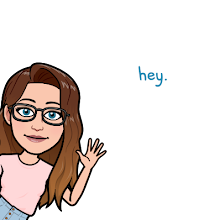Beautiful Blackbird
by Ashley Bryan
Bibliography:
Bryan, Ashley. Beautiful Blackbird. New York: Atheneum Books for Young Readers, 2003. ISBN 9780689847318
Plot Summary: The birds in the forest are all shades of bright, vivid colors, and then there is Blackbird. All of the other birds believe that Blackbird is the most beautiful, and they all want to have black spots or stripes in order to be beautiful, too. Blackbird assures all of them that beauty comes from the inside and not the outside, but he still paints them all with black so that they will feel beautiful as well.
Critical Analysis:
This is a type of traditional literature that I have not read much of before this point. While I know many original fairy tales, I find it incredibly interesting that this book is a retelling of a story from people of Zambia, and this is evident in the pictures, diction, and style of the overall story. Because I have not read much of this literature before, I did find this story to be incredibly intriguing. It made me want to look more into the Ila-speaking people, and I do think that is one of the overall purposes of the book.
The characters, setting, and plot are similar to other traditional stories. The characters are simple and easy to understand and relate to. Unlike some other stories, there is no real "evil" character here. Instead, they are all good in their own way, though some of them cannot see the wonderful points of themselves. The setting is also vague. It is said that they are in a forest and that they meet at a lake, but past that there are no real specifics to where the story takes place. Like the characters, the plot is simple as well. It moves forward well, though there is little tension and no dramatic conflict. They all want to be painted with black as well, and while Blackbird does not believe that they need it to be beautiful, he does agree to it and makes sure to paint all of the other birds when they ask. Therefore, there is no serious conflict between the birds aside from the initial jealousy.
The theme and style in this story, along with the illustrations, stand out above all else. Unlike the other traditional literature stories I read, this story has specific diction and style to the text. There is repetition and rhythm that speaks to the people that the story is told by originally, and it is wonderful that Bryan kept these qualities in his retelling of the story. The theme overall is a wonderful one, especially for children. It teaches the lesson that everyone is beautiful and wonderful in their own way, and they do not have to be like someone else. The story also explains how birds received the black marks that they still have to this day, which adds even more interest and belief to it being an original oral tale.
The illustrations in this story were wonderful; they were bright and vivid, and caused me to stay on each page for several minutes in order to simply look at them. It is called "cut paper artwork," and it is not a technique that I have seen in many books, so it made it even more interesting for me as a reader. It drew my attention and kept the story moving.
Review Excerpts:
From School Library Journal: "a life-enhancing folktale from Zambia--how birds got their black markings."
From Publisher's Weekly: "Bryan's singular voice provides rhythm and sound effects throughout this musical adaptation of a Zambian tale."
Connections:
This is a wonderful story to use in order to teach diction and style when it comes to text, and would be a good mentor text when it comes to writing stylized works. It could also be used to discuss theme and basic plot qualities.
Beat the Story - Drum, Pum-Pum by Ashley Bryan
The Story of Lightning and Thunder by Ashley Bryan





















